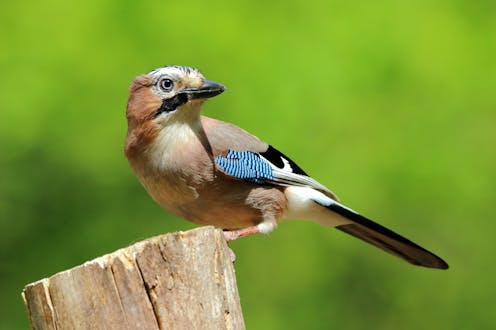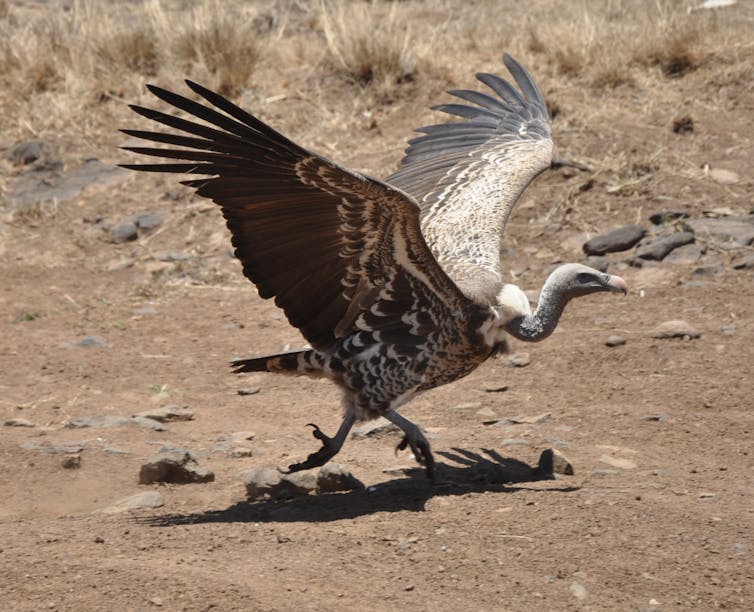
Following a deadly explosion in a Welsh coal mine in 1896, an engineer called John Haldane invented a type of bird cage that allowed canaries to accompany miners into the depths. The small songbirds are much more sensitive than humans to the deadly carbon monoxide gas found underground.
A sudden halt to their singing would warn workers to evacuate the pit – and rescue the canary by closing its cage door and opening a valve to pump oxygen inside. Remarkably, it was only in 1986 that canaries were relieved of their duties detecting noxious gases in UK coal mines.
As rising temperatures and habitat loss degrade the natural world, bird species everywhere play the role of mine canaries for the whole planet. Trends in the size of their populations inform us of the extent and patterns of environmental change, providing a kind of early warning system.
There are a number of reasons why birds are excellent indicators of the status of other wildlife groups and the health of the wider ecosystem. For one, birds are found all over the world, in all countries and in nearly all habitats. From ivory gulls and emperor penguins on the polar ice caps to birds of paradise in tropical rainforests, and from albatrosses cruising the remote open ocean to desert larks in the Sahara.
Birds are found on the highest mountains and some fly to extraordinary heights: a Rüppell’s vulture collided with an aircraft at an altitude of 11,300 metres. Certain seabirds feed at remarkable depths: one emperor penguin was recorded diving to 564 metres where it is almost completely dark and the pressure is 50 times stronger than at the ocean’s surface.
There are enough bird species that the patterns in their distribution and numbers closely reflect variation in the environment, with over 11,000 species in total, and over 400 species on average in each country.

Birds make good indicators because of their biology. Typically feeding towards the top of food webs, bird populations are an eye-catching gauge of changes further down the food chain, such as declines in the abundance of the things they eat. Fewer bug-eating birds like flycatchers may be a tell-tale sign of shrinking insect populations, something more difficult to measure but itself indicative of deteriorating natural habitats.
Birds also tend to move in response to environmental changes, with their local abundance reflecting changes in the climate or how land is used. Bird population trends often mirror those of other species.
For example, other groups of organisms such as butterflies, dung beetles and reptiles (which may be more difficult to study than birds) have mirrored the declines in abundance of farmland birds in the UK since the 1970s. This has been driven largely by the intensification of food production such as the increased use of pesticides.
Similarly, distribution patterns for birds broadly reflect those of many other wildlife groups, meaning that conservation efforts targeted at birds can typically be trusted to benefit a wider array of species.
One million records a month
There are also not so many species as to make identifying birds too difficult. The taxonomy, distribution, ecology and life history of birds are well understood. Over 16,000 scientific papers on bird biology are published each year.
Being relatively large, conspicuous, and generally easy to identify, birds are popular and engage the public. It has been estimated that 20% of people in the US and 30% in the UK watch or feed birds regularly.
An army of birdwatchers worldwide collects data on birds, whether on an ad hoc basis, or as part of more formal surveys and monitoring schemes. The eBird platform, where people can log their bird records, now holds more than one billion observations from over 200 countries, with over one million checklists submitted each month.
And some datasets on bird trends go back many decades, rendering them valuable for tracking environmental trends over time. Birds act as ambassadors for nature, capable of symbolising complex ecological communities while managing to resonate with most people.

Of course, birds tend to be less specialised within very specific types of habitats, such as coastal dunes or lake margins than insects or plants. They are less representative of freshwater and marine habitats than land-based ones, and are scarce or totally absent from some environments, such as the deep ocean or cave systems.
Nevertheless, it is still hard to beat birds as living indicators of environmental change. We must listen to the message they are sending us about the state of nature, and the pressures upon it. Like canaries in the coal mine, they tell us that it is time to act. Our lives may depend upon it.

Don’t have time to read about climate change as much as you’d like?
Get a weekly roundup in your inbox instead. Every Wednesday, The Conversation’s environment editor writes Imagine, a short email that goes a little deeper into just one climate issue. Join the 10,000+ readers who’ve subscribed so far.
Stuart Butchart is Chief Scientist at BirdLife International. He receives funding from the Aage V. Jensen Charity Foundation for work on BirdLife's State of the World's Birds assessments.
This article was originally published on The Conversation. Read the original article.







